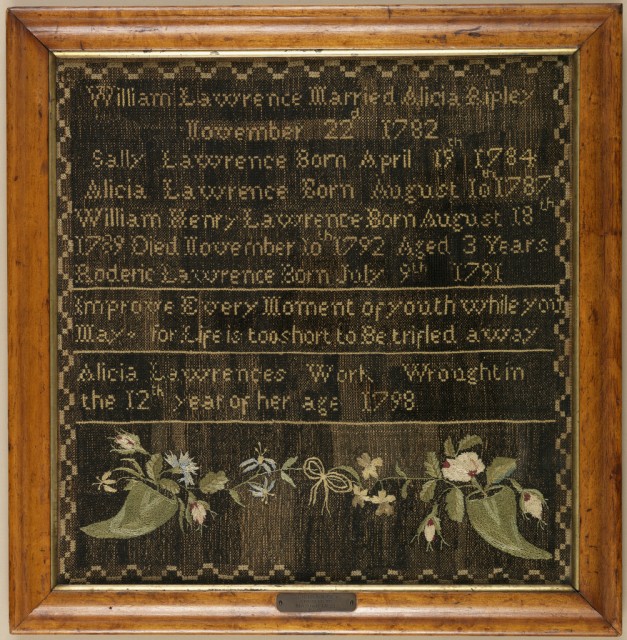Considered a genteel accomplishment, needlework was an important component of female education in colonial and federal America. Family register samplers, such as this late 18th century example worked by twelve-year-old Alicia Lawrence (1787–1866) of Hartford, Connecticut, were frequently made during the later phase of girls’ needlework training, and were a popular way of documenting and preserving family histories. The names and life dates of family members included on such samplers are invaluable clues to the lives of their young makers. Using the information recorded on this sampler, it was possible to trace of the life of Alicia, who married Hartford merchant Charles Sheldon (1787–1855), possibly her father’s apprentice, with whom she had ten children.
Adding additional interest to Alicia’s sampler is a family history concerning her mother, Alice Lawrence (1757–1845, née Adams), the stepsister of school-teacher-turned-Revolutionary-War-hero, Nathan Hale. According to accounts by Alice’s descendants and several early Hale biographers, Alice and Nathan were in love and became engaged in 1775. No evidence of this romance exists, however, and it has since been dismissed as family legend. Whether or not there is any truth to the story, a wedding between the two never took place. While on a mission for General George Washington in New York, Hale was captured and executed by the British as a spy in 1776. Several years later, Alice married William Lawrence (1751–1821), with whom she bore the four children named on her daughter’s sampler.
